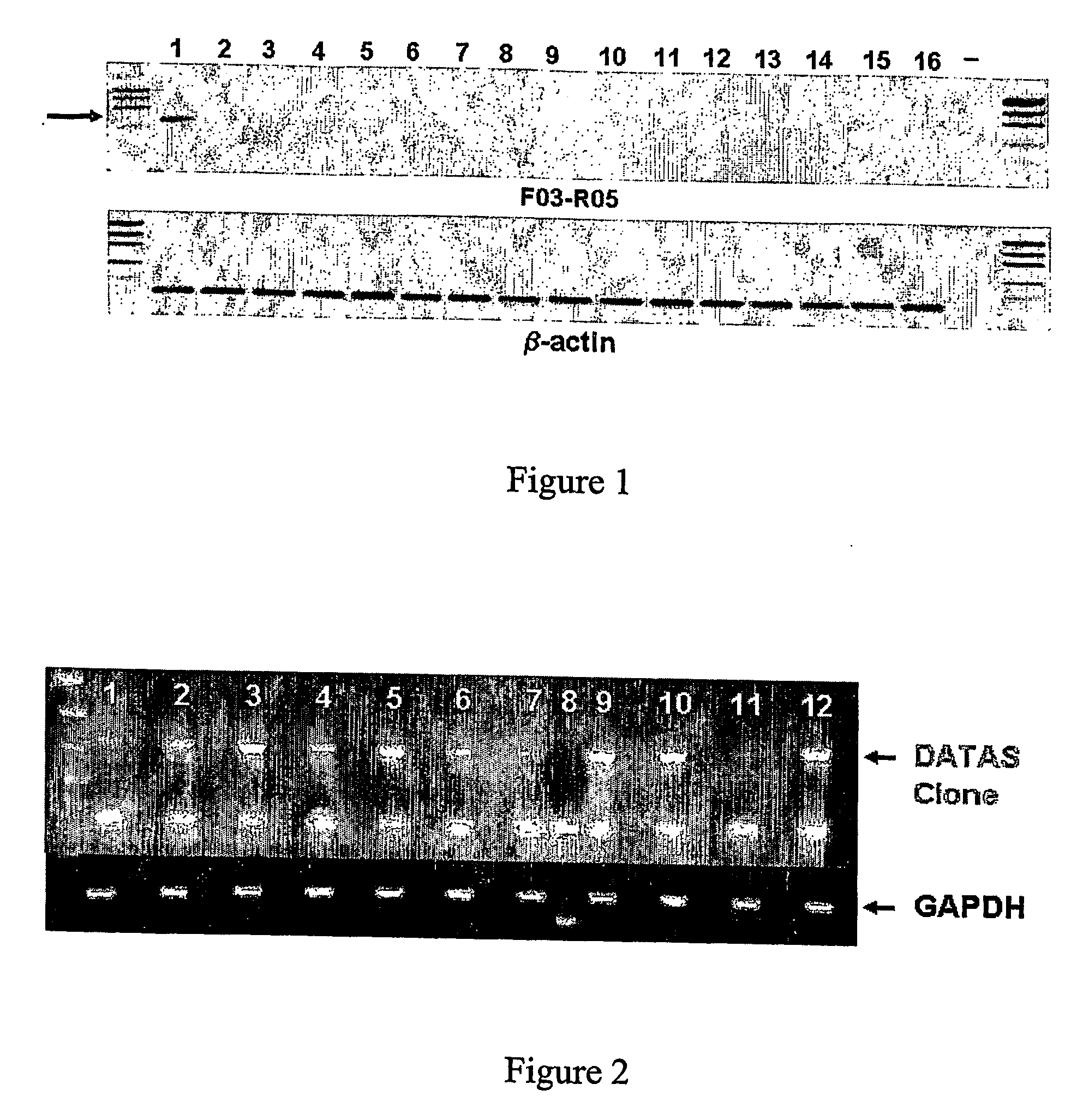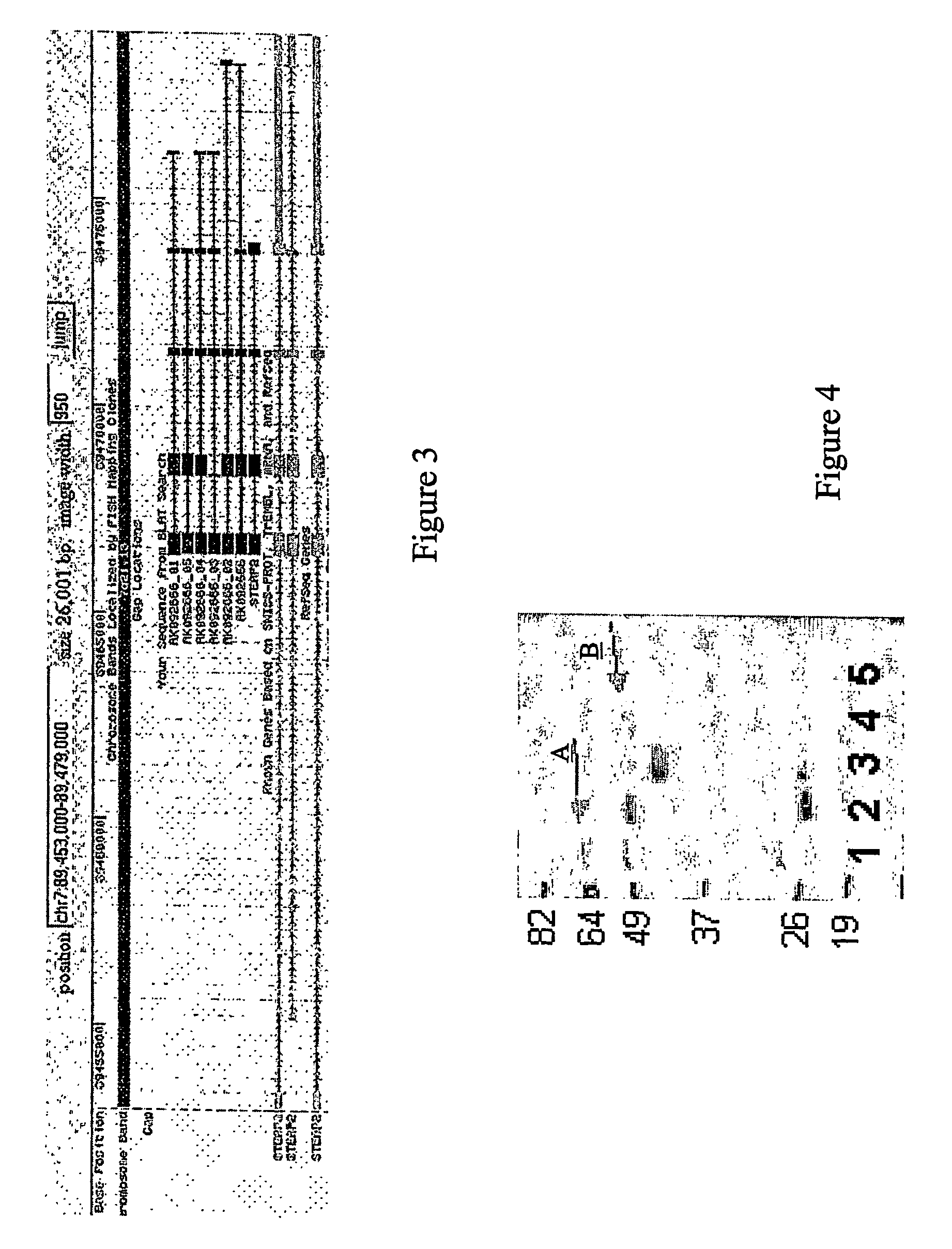Prostate specific genes and the use thereof as targets for prostate cancer therapy
- Summary
- Abstract
- Description
- Claims
- Application Information
AI Technical Summary
Benefits of technology
Problems solved by technology
Method used
Image
Examples
example
Tissue Sources:
[0200] Appropriate patient samples were procured for evaluation of research protocol. Samples were provided with relevant clinical parameters, and patient consent. Histological assessment was performed on all samples and diagnosis by pathology confirmed the presence and / or absence of malignancy within each sample. Clinical data generally included patent history, physiopathology, and parameters relating to prostate cancer physiology. Ten normal and ten malignant samples were procured along with available clinical information. In addition, ten samples from organs other than normal prostate and prostate cancer were procured to determine the tissue specific expression profile of epitopes. RNA derived from normal tissue samples was obtained from known commercial sources.
Generation of the DATAS Library
[0201] Samples were pooled based on their pathological diagnosis (normal vs. tumor). Samples were pooled based on equivalent amounts of total RNA to produce total pooled ...
PUM
| Property | Measurement | Unit |
|---|---|---|
| Fraction | aaaaa | aaaaa |
| Fraction | aaaaa | aaaaa |
| Length | aaaaa | aaaaa |
Abstract
Description
Claims
Application Information
 Login to View More
Login to View More - R&D Engineer
- R&D Manager
- IP Professional
- Industry Leading Data Capabilities
- Powerful AI technology
- Patent DNA Extraction
Browse by: Latest US Patents, China's latest patents, Technical Efficacy Thesaurus, Application Domain, Technology Topic, Popular Technical Reports.
© 2024 PatSnap. All rights reserved.Legal|Privacy policy|Modern Slavery Act Transparency Statement|Sitemap|About US| Contact US: help@patsnap.com









